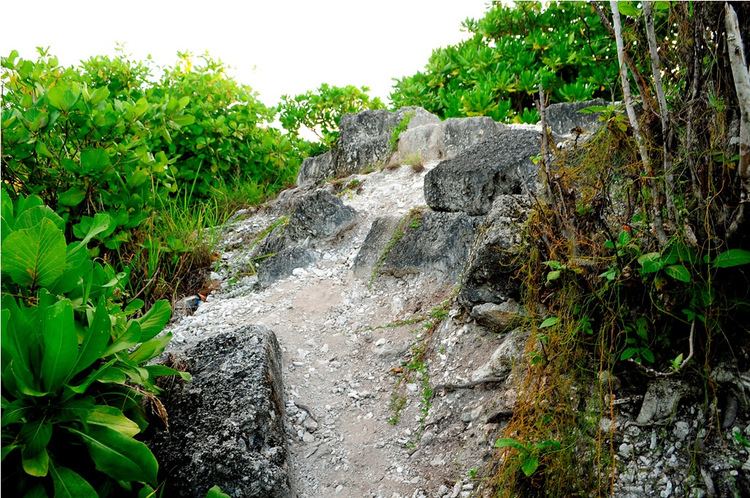 | ||
Fua Mulaku Havitta (historically referred as Dhadimagi Havitta) is the ruin of a Buddhist chaitya whose main feature is its ruined stupa. The Havitta is located at the northeastern end of Fuvahmulah, Maldives in the area of the historical boundaries of Dhadimagu ward of the island. Starting from the late 1990s, the area is claimed by Hoadhadu ward.
In 1922, when Bell saw the ruin, the big Havitta was of about 40 feet in height. A smaller mound, about 15 feet in height, was located nearby. In 1982, their shapes had already been lost because of the damage done by careless diggings to find valuable artifacts or for bungled research purposes, which according to islanders' reports had been made in the 1940s.
Explorers
In 1922 H. C. P. Bell, who had already visited the Maldives in 1879 and 1920 returned to the islands for a last time with the specific objective of establishing, once for all, whether Buddhism had indeed been the faith of the islanders before their conversion to Islam in ca. 1153 A.D. In February 1922, he travelled to Fuvahmulah and briefly examined the remains of the Havitta. However, he stayed on the island for just half a day, not doing excavations. Bell's extensive reports on the 1922 expedition, published in 1922-35 in the Journals of Royal Asiatic Society, and, as a book, posthumously in 1940, link the pre-Islamic Buddhist structures of the Maldives such as the Havitta with those of neighboring Sri Lanka. It was this Havitta, for which Bell was much struck by the close resemblance between it and the dagabas he had previously seen at Anuradhapura. Bell's expeditions remain to be the only professional archaeological excavations ever conducted in the Maldivian Archipelago. As a part of these excavations Bell travelled to some other islands too.
Norwegian Thor Heyerdahl also visited this Havitta (in November 1982), but was not allowed to do excavation work; the site had already been ruined by non-professional digging after Bell's visit. Heyerdahl and his comrades, however found stone parts which had fallen down from former fillings which convinced him that on same place, there must also have been a pre-buddhist sacral building. They also discovered two more, but much smaller, mounds nearby. The smallest one seemed to have been unknown to the islanders in 1982.
